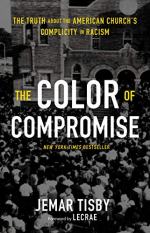|
This section contains 1,175 words (approx. 3 pages at 400 words per page) |

|
Summary
In Chapter 7, "Remembering the Complicity in the North," Tisby considers the racial dynamics in urban Midwestern, western, and northeastern regions. He shifts his focus from the Protestant church onto the Catholics and Pentecostals. Augustus Tolton, an emancipated Catholic, met discrimination in schools and parishes in the Midwest. Pentecostal preacher William J. Seymour met criticism for holding integrated gatherings.
Fundamentalists particularly opposed Pentecostal teachings, firmly believing in white sovereignty and black inferiority. Blacks did not easily identify with either denomination, leading to further division.
At the start of World War I, hundreds of thousands of blacks joined the effort. Upon returning from war, however, blacks realized their participation had not earned them improved civil rights. Frustrations with the lack of reform led to the Red Summer of 1919, during which 25 U.S. cities engaged in volatile racial conflict. The Great Migration followed: mass numbers of...
(read more from the Chapters 7 - 8 Summary)
|
This section contains 1,175 words (approx. 3 pages at 400 words per page) |

|




